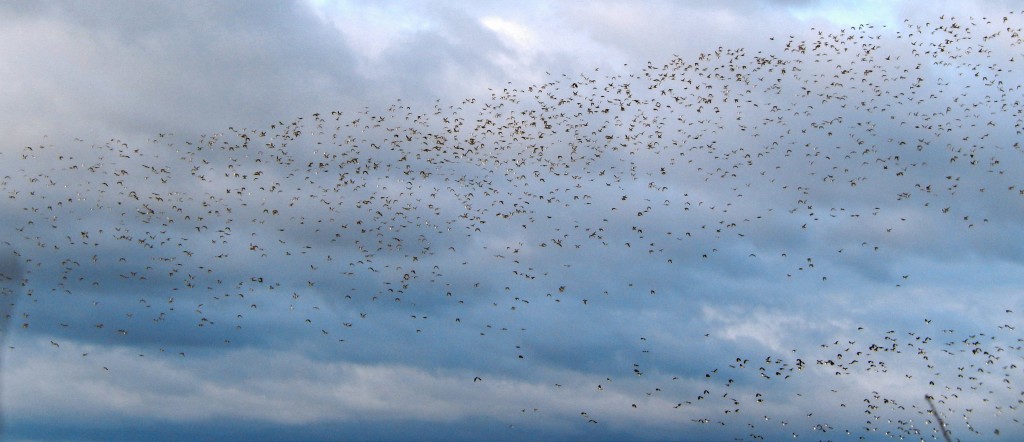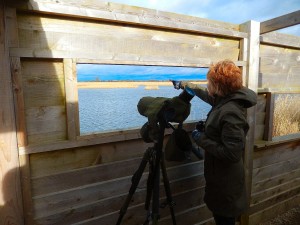Here in town, the daffodils are in bloom, the bluebells are coming into fresh green leaf, and the temperature is 10 C, so it might almost be early spring. And this morning I heard the chi-chi-chi / zheeeee! of a singing male Greenfinch, getting into the spring courtship season. But some trees on the same common are full of twittering Redwings, winter visitors from the frozen North, a cheerful and bright winter sight.
Out in the countryside, it looks much more like Winter, the trees as bare as they ought to be in early February, the only flowers a few tufts of snowdrops near the pleasantly lichened reserve signboard at RSPB Otmoor. The reserve has grown steadily better from its early day, with more and more wet scrapes, pools, and reedbeds spanning something like a mile of Otmoor’s wide, flat expanse.
A Kestrel hovered overhead; Bramblings and Chaffinches lurked in the hedges; Redshank called in the distance. Red Kites drifted by over the trees. Seven Snipe jumped up, screeching, from wet grass and zigzagged to a muddy island. A Cetti’s Warbler sang from almost under our feet, invisible.
The luxurious hide revealed numbers of Wigeon, Shoveler, and Teal, and a flock of Linnets with a few Goldfinches feeding on the grass in full view. Yellowhammers, Reed Buntings and more Linnets sat in the bushes. The trees were full of twittering: I soaked up the soundscape with hands cupped to my ears.

When a Buzzard came over, some 3,000 Lapwings and a similar number of Golden Plover got up, all glinting gold as they turned together in the sunshine.

Over to the north, a Marsh Harrier dropped into the reeds, got up again and scoured the reedbed for signs of prey, its broad brown wings slightly raised, its broad tail quiet unlike that of the Red Kite that wheeled past it.
